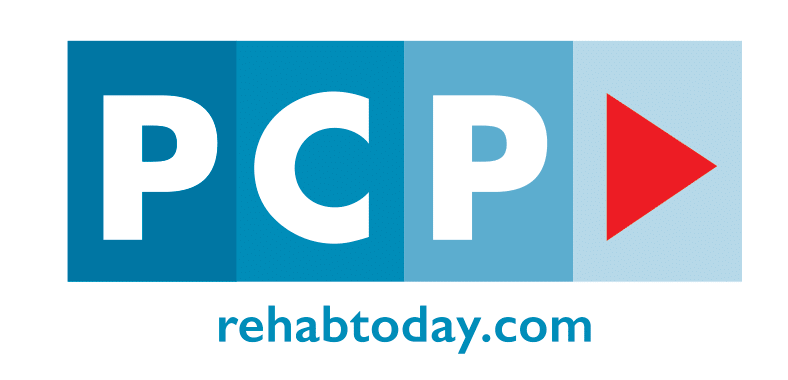Cocaine, once synonymous with the glitz and glam of the wealthy elite, has taken a dark turn as it finds a new audience among the UK’s younger generation. Even from an early age, the younger generation is increasingly exposed to cocaine, making it disturbingly commonplace at parties, clubs, and even casual gatherings. This shift isn’t just a fleeting trend – it’s a growing epidemic with severe consequences.
At PCP, we’re committed to shedding light on the pressing issues surrounding substance abuse. In this article, we dive deep into the unsettling rise of cocaine use among young people in the UK, exploring the factors driving this increase and what it means for the future.
Statistics on Cocaine Use in the UK
2.4% of people between 16 to 59 years old reported using cocaine in the past year.
5.1% of young adults between 16 to 24 years old reported using cocaine in the past year.
The UK recorded over 857 deaths in 2022 where cocaine was involved, marking a continued rise in cocaine-related fatalities over the past decade. Cocaine-related fatalities have increased over the past few years.
Cocaine use costs the public an estimated £20 billion annually, which includes healthcare, law enforcement, and lost productivity.
How Serious Is Cocaine Use in the UK?
The UK has always had a long and turbulent history with cocaine. Despite its popularity in the early 20th century, the recreational use of the drug was criminalized under the Dangerous Drugs Act of 1920 as fears of its addictive potential and potential public health consequences grew.
However, recreational use continued and the 1980s saw a strong resurgence in cocaine use as the popularity of the drug grew worldwide. By the late 2010s, the UK was the cocaine capital of Europe, with the highest number of cocaine users on a per capita basis and the second highest in the world behind only Australia.
A popular misconception is that cocaine is a drug of wealth and status. This was especially true during the cocaine boom of the 1980s and 1990s when it became known as a “party drug” for celebrities, professionals, and those in the finance sector. However, studies have shown that cocaine use occurs across all socio-economic groups. Unlike previous generations, today’s trends show a broader demographic engaging in cocaine use, reflecting shifts in societal attitudes and external factors.

Cocaine use is also much higher among younger individuals. A study showed that 6.2% of individuals between the ages of 15 to 24 years and 4.6% of people between 25 to 35 years admitted to cocaine use in the past year.
Despite remaining steady for years, cocaine use also seems to be on the rise. Government statistics show a 10% rise year-on-year in individuals seeking treatment for powder cocaine addiction. Records also show that 19% of individuals self-reporting for treatment had an addiction to crack cocaine and 17% said they had a problem with powder cocaine.
Worryingly this trend is associated with higher drug deaths due to cocaine use. Drug-related deaths due to cocaine in England and Wales have also increased remarkably with 857 deaths recorded in 2022 compared to 139 deaths a decade earlier
Another shocking statistic is the worrying rise in the proportion of school children who have taken cocaine in England between 2010 and 2018; this figure nearly doubled to about 1.6% of boys and 1.2% of girls, although the most recent statistics show a downward trend.
Why Is Cocaine Use on the Rise Among the Younger Generation
Polydrug use. According to a study, 56% of adolescents under 18 and 25.1% of all treatment admissions for substance misuse in 2022 reported polydrug use. The U.K. reported that 34% of drug poisoning deaths in 2021 involved two or more substances, with heroin and cocaine being the most common combination. Data from the Office for Health Improvement and Disparities shows that cocaine users often abuse opiates or alcohol. Recent statistics on drug usage indicate a concerning trend in the prevalence of polydrug use among 16-24 year-olds, highlighting the public health implications and changes in societal attitudes towards substance use.
Cocaine has become more affordable. Another driving force behind the rise of cocaine use among the younger generation is its increased affordability, purity, and access. Between 2019 and 2021 the estimated street price of a gram of cocaine in the UK fell by over 38%, while the purity of the drug rose.
Less stigma surrounding drug use. There has been a steady decline in the stigma surrounding drug use among young adults and adolescents. This has normalized drug use culture, especially in social situations, and is a contributing factor to the widespread use of cocaine as a party drug. Cocaine use is also often associated with the UK’s binge-drinking culture, further normalizing its recreational use.
Young people are more impressionable. Younger individuals are impressionable and more likely to join in drug abuse due to factors like peer pressure, curiosity, and the desire to follow the latest trends.
Changing socioeconomic situation. Economic stagnation, inflation, and rising youth unemployment may also contribute to the rising trend of cocaine use among younger age groups. Data shows that substance abuse increases during times of economic downturn and recessions, likely as an unhealthy coping mechanism in response to psychological distress.
Cocaine is a popular party drug. As this Reddit post mentioned, cocaine is commonly used at parties, raves, concerts, clubs, and even sporting events. This makes it particularly popular among younger users who often make up a large majority of partygoers.
Use as a productivity drug. Due to its stimulant effects, cocaine is commonly used as a productivity drug similar to other stimulants like Adderall, Dexedrine, and Ritalin. This practice is mostly common among young professionals and college students.
Welfare and mental health services cuts. Budget cuts to welfare and NHS mental health services by the government have reduced the ability of the health sector to deal with the rising need for mental health and addiction treatment services.
Driven by urban users. Despite growing use in rural and suburban areas, cities still drive cocaine use within the UK with the daily cocaine consumption in London estimated to be higher than that of Berlin, Amsterdam, and Barcelona combined. These urban populations are considerably younger than rural and suburban areas.
Challenges faced by Generation Z. Generation Z, often referred to as zoomers, faces unique challenges that increase their risk of substance use disorders. Nearly 90% of these disorders begin in the teenage years, a critical period marked by feelings of loneliness and the influence of social media. Socio-economic factors, such as a lack of access to affordable healthcare, further exacerbate the risk of drug usage and long-term detrimental effects on their overall well-being.
How To Recognise Substance Use Disorders
Diagnosing a drug addiction should only be done by a qualified healthcare provider. However, there are some common features usually seen in a substance use disorder like cocaine addiction.
Using larger amounts or taking the drug for longer than originally intended.
Persistent cravings.
Repeated unsuccessful attempts to control drug use.
Spending a significant amount of time on obtaining, using, or recovering from the effects of the drug.
Drug use negatively affects performance at work, school, or home.
Avoiding important social, work, or recreational activities because of drug use.
Using drugs in dangerous situations or drug use leads to dangerous situations.
Continuing to use drugs despite physical or psychological problems caused by drug use.
Continuing to use drugs despite interpersonal problems caused by drug use.
Requiring larger doses of the drug to achieve the same desired effect.
Experiencing uncomfortable symptoms when drug use stops.
Identifying effective drug candidates is crucial for the treatment of substance use disorders, as it can lead to better therapeutic outcomes and reduced side effects.
Seek Help Today
Cocaine use among the younger generation in the UK is a growing concern, driven by lower prices, social pressures, and reduced stigma. Seeking professional help is a crucial step in recovery. Detox, rehab services for cocaine addiction, and aftercare are essential components of overcoming addiction and ensuring long-term success. Emerging technology, such as ingestible injectables and digital platforms, can significantly aid in the treatment and recovery process for cocaine addiction by improving patient experiences and promoting more efficient clinical research.
If you or someone you know is struggling with cocaine use, don’t hesitate to reach out to available resources – at PCP we offer intervention services that can make a life-changing difference. Reach out today!
Author
-
Perry is the founder of Rehab Today by PCP and opened the first treatment centre at Luton in 2004.
Perry’s background apart from his own personal struggle with addiction over 20 years ago is in the recruitment industry where he started his career and became Finance Director of a UK PLC and in the late 90’s was part of a new start up and became the leading recruitment consultancy in Intellectual Property across Europe.
Perry is passionate about recovery from addiction and liaises with family members to coordinate admissions, often sharing his own experience to help people when they first admit into treatment. Most certainly the driving force behind the success of Rehab Today by PCP which now boasts 60 primary and 68 move on beds in all locations. Perry is a keen fitness fanatic and Arsenal fan!
View all posts








